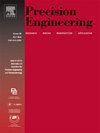A novel data driven formulation for predicting jetting states and printing zone of high-viscosity nanosilver ink in inkjet-based 3D printing
IF 3.5
2区 工程技术
Q2 ENGINEERING, MANUFACTURING
Precision Engineering-Journal of the International Societies for Precision Engineering and Nanotechnology
Pub Date : 2024-12-01
DOI:10.1016/j.precisioneng.2024.11.012
引用次数: 0
Abstract
Inkjet printing offers significant benefits for additive manufacturing (AM) and printed electronics, such as cost-effectiveness, scalability, non-contact printing, and the flexibility for ad-hoc customization. However, some challenges such as stable jetting states and defined printing zone still needs attention. Data driven modeling such as machine/deep learning (ML/DL) as a predictive methodology has proven to reduce the experimental cost and workload in AM for low-viscosity inks. However, there is an oversight in ML extension to high-viscosity inks due to some inherit challenges such as irregular shape formation, and adhesiveness. Therefore, this study is focused on the prediction of jetting states and defining the printing zone for three-dimensional (3D) inkjet printing of high-viscosity ink. The experimental data is comprised of equipment parameter settings, material properties, and camera-captured features. The jetting behavior is recorded with a high-speed camera and carefully categorized into five classes: no jetting, orifice adhesion, droplet jetting, orifice tail, and beads hanging. A robust and efficient high-viscosity 3D printing U-Net (HV3DP-UNet) model is proposed, that achieved the jetting state and printing zone prediction accuracy of 97.98% and 100% respectively. For the fair comparison, three traditional ML and two more DL models are tested and analyzed in detail. The robustness and efficacy of the proposed model is supplemented with four performance metrics, i.e., accuracy, precision, recall and f1-score. The models’ efficacy has been proved by achieving improved results on the public dataset, the proposed model has achieved overall prediction accuracy of 92.95%. The presented data-driven approach serves as a systematic framework for enhancing quality of inkjet-based 3D printing utilizing high-viscosity ink.
求助全文
约1分钟内获得全文
求助全文
来源期刊
CiteScore
7.40
自引率
5.60%
发文量
177
审稿时长
46 days
期刊介绍:
Precision Engineering - Journal of the International Societies for Precision Engineering and Nanotechnology is devoted to the multidisciplinary study and practice of high accuracy engineering, metrology, and manufacturing. The journal takes an integrated approach to all subjects related to research, design, manufacture, performance validation, and application of high precision machines, instruments, and components, including fundamental and applied research and development in manufacturing processes, fabrication technology, and advanced measurement science. The scope includes precision-engineered systems and supporting metrology over the full range of length scales, from atom-based nanotechnology and advanced lithographic technology to large-scale systems, including optical and radio telescopes and macrometrology.

 求助内容:
求助内容: 应助结果提醒方式:
应助结果提醒方式:


